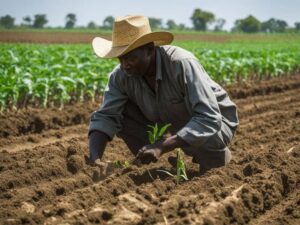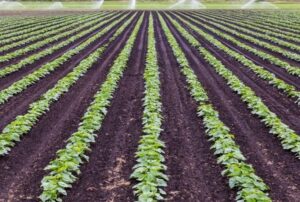5 Key Facts About Intensive Subsistence Farming You Need
Intensive subsistence farming is a method of agricultural practice where farmers focus on producing large amounts of food on small plots of land using minimal technology. This practice has been essential to feeding growing populations in many parts of the world, particularly in countries like India, China, and Southeast Asia. If you’re interested in the principles and benefits of this farming technique, this blog will provide you with a comprehensive understanding of what intensive subsistence farming is, how it works, and why it’s an essential farming method.
In this article, we’ll discuss five key facts about intensive subsistence farming that will help you grasp the importance and functionality of this agricultural practice. We’ll also touch on related concepts like intensive subsistence agriculture, subsistence farming and intensive farming, and provide examples of this farming method in practice.
1. What is Intensive Subsistence Farming?

Intensive subsistence farming refers to a form of agriculture where farmers maximize the output of their land with minimal input. The term “subsistence” highlights that the primary goal of this farming method is not for commercial gain, but rather to produce enough food for the farmer’s family or local community. Unlike commercial farming, which relies heavily on machinery and large-scale production, intensive subsistence farming is labor-intensive and heavily reliant on human effort.
In intensive subsistence agriculture, farmers typically grow crops such as rice, wheat, maize, barley, and legumes. They often utilize every inch of available land, applying techniques like crop rotation, irrigation, and organic fertilizers to improve soil quality and crop yield.
Farmers engaging in intensive subsistence agriculture often face a few key challenges, including limited access to modern technology, dependence on favorable weather conditions, and the pressures of feeding a growing population on small parcels of land. Despite these difficulties, intensive subsistence farming has been a resilient way to sustain rural communities for centuries.
2. The Core Characteristics of Intensive Subsistence Agriculture

When exploring intensive subsistence agriculture, it’s important to recognize its distinct characteristics. Here are the key elements that define this farming method:
High Land Productivity
One of the defining features of intensive subsistence farming is its emphasis on high land productivity. Farmers cultivate small plots of land, often no larger than a few acres, and focus on maximizing the output from these areas. The idea is to use the available space efficiently, often growing multiple crops each year.
For example, in many parts of Asia, rice paddies are carefully managed with irrigation systems to grow multiple crops per year. This high-intensity farming method can yield significant amounts of food, which is crucial in regions with dense populations and limited arable land.
Labor-Intensive Practices
Intensive farming involves a lot of manual labor. This means that most of the work, from planting to harvesting, is done by hand or with simple tools. The reliance on human effort is especially true in regions where modern machinery is too expensive or impractical. In addition to planting and harvesting, farmers must constantly care for their crops, manage irrigation, and use natural fertilizers like compost or manure.
Minimal Use of Technology
Unlike commercial farming, which uses advanced technology like tractors, drones, and automated harvesters, intensive subsistence farming typically relies on traditional farming techniques. Farmers make use of basic tools like hoes, plows, and irrigation canals. This reliance on human labor and simple tools helps to keep costs low and production sustainable for small-scale farmers.
For more on sustainable and low-cost farming techniques, you can read our article on 5 Key Insights into Intensive Subsistence Farming.
Crop Diversification
Farmers practicing subsistence farming and intensive farming often engage in crop diversification. By planting various crops on the same land, they reduce the risk of crop failure due to pests, diseases, or unfavorable weather conditions. This approach also allows farmers to meet different dietary needs, and sell any surplus crops to earn income for essential family needs.
3. Why Intensive Subsistence Farming is Crucial for Food Security

The role of intensive subsistence farming in ensuring food security cannot be overstated. This farming practice is vital in densely populated countries, where access to larger land areas for commercial agriculture is not feasible.
Ensuring Steady Food Supply
Intensive subsistence farming contributes significantly to the food supply in regions where agricultural land is scarce. By increasing crop yield on small land areas, this farming method ensures that enough food is available to meet the nutritional needs of local populations.
For example, in South Asia, intensive subsistence agriculture has allowed farmers to cultivate multiple crops per year, providing a steady supply of rice, wheat, and vegetables to local communities. These crops form the staple diet of many people in these regions.
Poverty Alleviation
Since subsistence farming produces food primarily for local consumption, it reduces the need for farmers to purchase food from external markets. This helps alleviate poverty by enabling farmers to grow their own food and reduce the cost of living. Surplus crops can also be sold in local markets to generate income for other household needs.
Supporting Rural Livelihoods
Intensive subsistence farming supports livelihoods in rural areas where job opportunities are limited. By providing food and income to millions of farmers, this practice helps sustain rural communities and prevents large-scale migration to urban areas in search of work.
For further reading on how farming techniques contribute to sustainable livelihoods, visit Top 5 Organic Crop Farming Tips for a Thriving Sustainable Farm.
4. Examples of Intensive Subsistence Farming Around the World

There are several countries where intensive subsistence farming plays a crucial role in ensuring food security. Here are some notable examples:
Rice Farming in China
China is one of the largest producers of rice globally, and intensive subsistence farming has played a significant role in its agricultural landscape. Farmers use small plots of land to grow rice in flooded paddies, often using organic fertilizers and traditional irrigation systems. With the use of high-yielding rice varieties, China has been able to produce rice to feed its vast population.
Wheat Cultivation in India
In India, wheat is a major crop grown using intensive farming methods. Farmers utilize high-density planting techniques, where crops are planted close together to maximize land use. Additionally, irrigation systems like the Ganga Canal provide the necessary water for wheat production in arid regions.
Rice and Maize Farming in Southeast Asia
Countries like Thailand, Vietnam, and Indonesia rely heavily on intensive subsistence agriculture to grow rice, maize, and other crops. Farmers use irrigation techniques to water crops and apply natural fertilizers like compost to ensure soil fertility. By growing multiple crops per year, they optimize land productivity.
For more detailed examples and practices from other regions, check out Everything You Need to Know About Indian Cotton.
5. Benefits and Challenges of Intensive Subsistence Farming

While intensive subsistence farming offers many benefits, it also faces several challenges. Below, we discuss both the advantages and the difficulties of this farming method.
Benefits
- Efficient Land Use: Since the practice maximizes output from small land areas, it allows farmers to produce enough food to feed their families and local communities, contributing to overall food security.
- Environmental Sustainability: Because farmers often use organic fertilizers and crop rotation, this method is less harmful to the environment compared to industrial farming practices. This is a key aspect of organic natural farming and its contributions to sustainability.
For more on the importance of sustainable farming, explore Why Yellowing of Leaves is Due to Deficiency of Essential Nutrients.
Challenges
- Labor Intensity: Intensive subsistence agriculture requires a great deal of labor, and with the younger generation increasingly migrating to urban areas, finding sufficient labor can be a challenge.
- Vulnerability to Weather: Since the practice often depends on favorable weather conditions, crops may suffer due to droughts, floods, or extreme temperatures.
- Soil Depletion: Without proper soil management, intensive farming can lead to soil exhaustion. Overuse of land without crop rotation can reduce soil fertility, affecting future crop yields.
In conclusion, intensive subsistence farming is a critical practice that sustains millions of people worldwide. It allows farmers to make the most of limited resources, ensuring food security and supporting rural livelihoods. However, it’s essential to recognize the challenges that come with this method, such as labor shortages and the risks associated with environmental factors.
For more resources on organic and sustainable farming techniques, don’t forget to check out Learn Organic Natural Farming for a Better Future.
Final Thoughts on Intensive Subsistence Farming
Intensive subsistence farming is more than just a traditional agricultural practice; it’s a vital tool for food security and poverty reduction, especially in densely populated countries. While it comes with its own set of challenges, its ability to sustain rural populations and provide food in areas with limited resources makes it an indispensable farming method.
By understanding the complexities of intensive subsistence agriculture, we can better appreciate its role in feeding the world and supporting local communities. As we move toward more sustainable farming practices, integrating modern techniques with traditional knowledge can help create a brighter future for farmers and the planet.














Post Comment